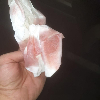jpfunjunky
Member
- Joined
- November 18, 2023
- Messages
- 12
- Reaction score
- 22
- City, State
- Williston, Fl.
- Year, Model & Trim Level
- 2004 Sport Trac Adrenalin
Hello everyone. I’ve stalked these forums enough it should be illegal but finally need help and advice!
I recently purchased a 2004 Sport Trac Adrenalin 4.0 SOHC for my kid. It has 113,000 miles and is clean inside and out. It didn’t run and previous owner said he was having the typical overheating issues from the plastic thermostat housing and replaced it with an aluminum aftermarket, as well as put in a new radiator. Of course he claimed it never ran real hot but who knows. For 1,000 dollars the shady tree mechanic in me couldn’t pass it up!
Problem is there was a good bit of moisture in almost all the cylinders when I pulled the plugs. They were wet and smelled like gas but wouldn’t light with a cig lighter. I pulled the fuel pump relay and we tested for compression on all but the impossible to reach #3 cylinder and they all tested well at around 180 psi.
Decided to drain all of the coolant from the engine (to prevent coolant from entering cylinders), bought and installed new plugs and wires and she fired right up! Ran good from what I could tell, except some steamy/smoky exhaust. We didn’t run it long at all though, so I don’t know if the exhaust would clear up or not.
I researched and found that coolant can enter the lower intake manifold, so kiddo and I pulled the intake and there is no lower manifold that I can see, and no way for coolant to get in. So I’m stumped and need help!
I do believe the new thermostat housing that was installed was leaking. It has a really cheap O-ring that seemed flattened. Prior to draining the engine, when cranked/wouldn’t start, some coolant was coming down from that area. I couldn’t quite tell where it was coming from, but can’t see how it would get into the cylinders when the SOHC has an elevated connection point for the intake.
What am I missing?
Sorry for the long post!
I recently purchased a 2004 Sport Trac Adrenalin 4.0 SOHC for my kid. It has 113,000 miles and is clean inside and out. It didn’t run and previous owner said he was having the typical overheating issues from the plastic thermostat housing and replaced it with an aluminum aftermarket, as well as put in a new radiator. Of course he claimed it never ran real hot but who knows. For 1,000 dollars the shady tree mechanic in me couldn’t pass it up!
Problem is there was a good bit of moisture in almost all the cylinders when I pulled the plugs. They were wet and smelled like gas but wouldn’t light with a cig lighter. I pulled the fuel pump relay and we tested for compression on all but the impossible to reach #3 cylinder and they all tested well at around 180 psi.
Decided to drain all of the coolant from the engine (to prevent coolant from entering cylinders), bought and installed new plugs and wires and she fired right up! Ran good from what I could tell, except some steamy/smoky exhaust. We didn’t run it long at all though, so I don’t know if the exhaust would clear up or not.
I researched and found that coolant can enter the lower intake manifold, so kiddo and I pulled the intake and there is no lower manifold that I can see, and no way for coolant to get in. So I’m stumped and need help!
I do believe the new thermostat housing that was installed was leaking. It has a really cheap O-ring that seemed flattened. Prior to draining the engine, when cranked/wouldn’t start, some coolant was coming down from that area. I couldn’t quite tell where it was coming from, but can’t see how it would get into the cylinders when the SOHC has an elevated connection point for the intake.
What am I missing?
Sorry for the long post!










